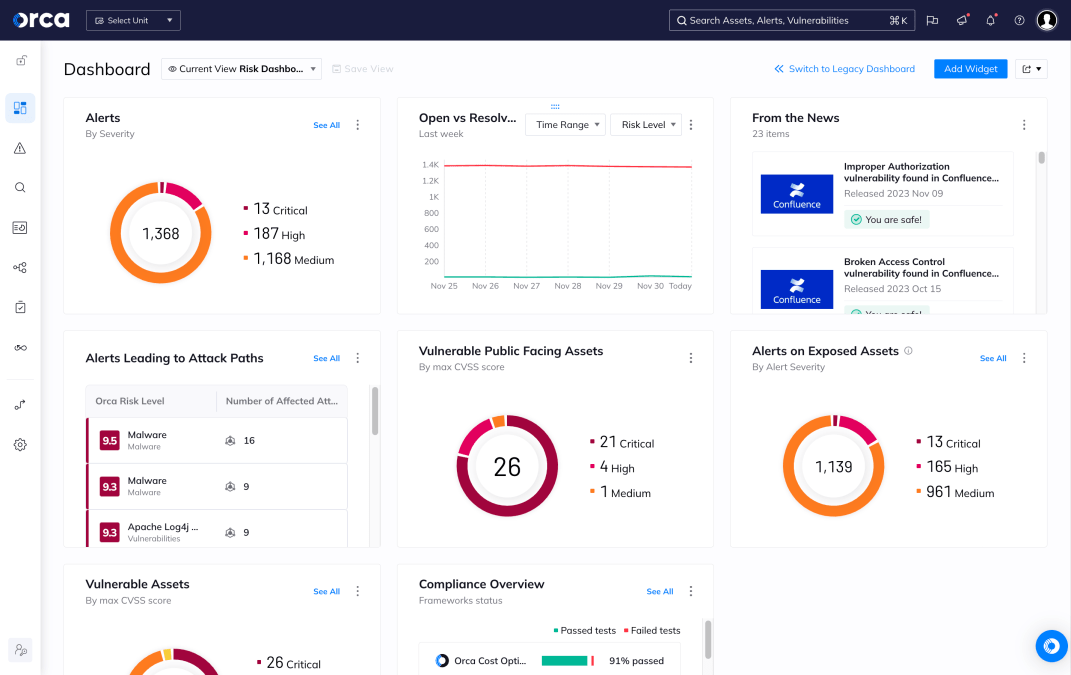Ransomware is a type of malicious software designed to encrypt a victim’s data and demand payment, typically in cryptocurrency, for the decryption key needed to restore access. Originally targeting individual systems, ransomware has evolved into a significant threat against enterprise networks, cloud environments, and critical infrastructure. In the context of cloud security, ransomware represents a severe risk to business continuity, data availability, and organizational reputation.
Why is it important?
Ransomware attacks have surged in frequency and sophistication. The consequences go beyond financial loss, encompassing system downtime, data breach risks, regulatory penalties, and reputational damage. That explains why the threat continues to hold the attention of CISA, which has developed its #StopRansomware Guide.
Cloud environments present unique challenges. The interconnected nature of cloud services, multi-cloud architectures, and rapid deployment models create new attack vectors. Misconfigured resources, inadequate backup strategies, and insufficient access controls can all be exploited by ransomware actors.
Data privacy regulations like GDPR and CCPA add further pressure. Organizations must report data breaches and demonstrate that appropriate measures were taken to protect personal data, or face substantial penalties. Ransomware that results in data exfiltration or unavailability can trigger compliance violations.
How does it work?
Ransomware attacks generally unfold in several stages:
- Initial Access: Gained via phishing, software vulnerabilities, or compromised credentials.
- Reconnaissance: Attackers explore the environment, map the network, and identify valuable assets and backup systems.
- Lateral Movement: The malware spreads across the network, often disabling backup and recovery systems.
- Payload Deployment: Ransomware encrypts targeted systems, rendering files inaccessible.
- Extortion: Attackers demand payment in exchange for the decryption key and, increasingly, to prevent public exposure of exfiltrated data (double or triple extortion).
In cloud environments, ransomware can target cloud storage buckets, overprivileged service accounts, APIs, and misconfigured resources. Attackers may leverage cloud-native tools to move laterally and escalate privileges before deploying the payload.
Security risks and challenges
Ransomware poses several critical risks:
- Data loss and downtime: Encryption disrupts business operations.
- Regulatory exposure: Exfiltrated data may include regulated personal or sensitive data.
- Incomplete recovery: Attackers often target backup infrastructure, reducing recovery options.
- Cloud complexity: Multi-cloud deployments and ephemeral workloads increase difficulty in detection and containment.
- Supply chain risk: Attacks on service providers can cascade to multiple organizations.
- Human factor: Phishing and social engineering remain key entry points.
Cloud-specific risks include insufficient identity and access management, inadequate logging, misconfigured storage, and lack of workload isolation. The shared responsibility model can also create confusion about which party is accountable for which aspects of security.
Best practices and mitigation strategies
Mitigating ransomware requires a layered defense strategy:
- Backups: Implement the 3-2-1 backup rule with additional safeguards like immutable storage and air-gapping. Regularly test restoration processes.
- Zero-trust architecture: Enforce least privilege access, continuous verification, and micro segmentation to prevent lateral movement.
- Patching and configuration management: Regularly update systems and audit configurations to close known vulnerabilities.
- Multi-factor authentication: Mandatory for all privileged and remote access.
- Incident response planning: Include ransomware-specific playbooks with communication protocols and decision trees.
- Security awareness training: Educate users on identifying phishing and social engineering tactics.
- Cloud-specific controls: Use cloud-native security features, review IAM policies, monitor for abnormal usage, and secure APIs.
The NIST Ransomware Risk Management Framework Profile offers structured guidance for implementing safeguards that align with Identify, Protect, Detect, Respond, and Recover phases.
How Orca Security helps
The Orca Cloud Security Platform delivers comprehensive ransomware detection and protection across AWS, Azure, Google Cloud, Oracle Cloud, Alibaba Cloud, and Kubernetes—without requiring agents.
Orca helps security teams:
- Detect, prioritize, and remediate ransomware in cloud workloads, such as storage buckets and virtual machines
- Leverage multiple detection techniques, including signature-based scanning, heuristic file analysis, dynamic scanning, and genetic signature detection and YARA rules
- Analyze ransomware risks holistically to identify critical attack paths and enhance Cloud Detection and Response (CDR)
- Ensure continuous multi-cloud compliance with regulations and industry standards that mandate ransomware detection
Orca gives organizations full-stack, context-rich visibility into malware risks—allowing them to act quickly and stop threats before they escalate.



